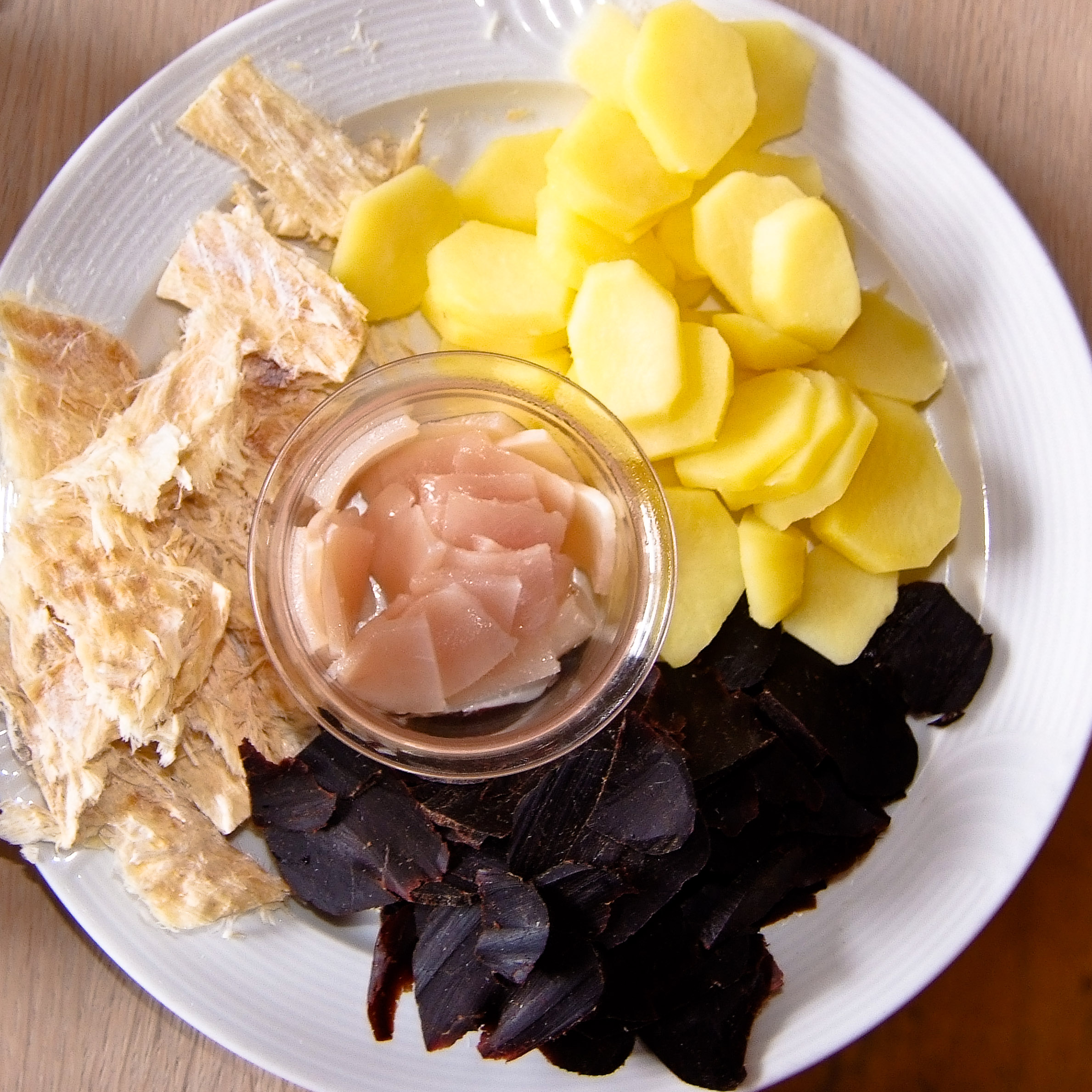Tvøst Og Spik on:
[Wikipedia]
[Google]
[Amazon]
 ''Tvøst og spik'' (also called ''Grind og spik'') is a typical dish of the
''Tvøst og spik'' (also called ''Grind og spik'') is a typical dish of the NGS.fo, Grindadráp í Føroyum, page 34 (''in Faroese'')
/ref> it can be frozen and later prepared, or it can be hung up outdoors to dry, then cut in long slices (''grindalikkja'') and hung under a roof away from the rain. The blubber can also be prepared in different ways, boiled, salted or dried, but not fried. Dried blubber can also be eaten together with dried fish, as shown on the photo. The meat is very dark, almost black. The tradition of eating whale meat and blubber dates back many centuries, being first mentioned directly in the Faroese part of the Norwegian
 ''Tvøst og spik'' (also called ''Grind og spik'') is a typical dish of the
''Tvøst og spik'' (also called ''Grind og spik'') is a typical dish of the Faroe Islands
The Faroe Islands ( ) (alt. the Faroes) are an archipelago in the North Atlantic Ocean and an autonomous territory of the Danish Realm, Kingdom of Denmark. Located between Iceland, Norway, and the United Kingdom, the islands have a populat ...
, a self-governing country of Denmark in the North Atlantic. ''Tvøst og spik'' consists of pilot whale
Pilot whales are cetaceans belonging to the genus ''Globicephala''. The two Extant taxon, extant species are the long-finned pilot whale (''G. melas'') and the short-finned pilot whale (''G. macrorhynchus''). The two are not readily distinguish ...
meat
Meat is animal Tissue (biology), tissue, often muscle, that is eaten as food. Humans have hunted and farmed other animals for meat since prehistory. The Neolithic Revolution allowed the domestication of vertebrates, including chickens, sheep, ...
, blubber
Blubber is a thick layer of Blood vessel, vascularized adipose tissue under the skin of all cetaceans, pinnipeds, penguins, and sirenians. It was present in many marine reptiles, such as Ichthyosauria, ichthyosaurs and plesiosaurs.
Description ...
and potatoes.
The meat is prepared in different ways; it can be boiled or fried fresh, it can be stored in either dry salt (''turrsaltað'') or in very salty brine (''lakasaltað''),/ref> it can be frozen and later prepared, or it can be hung up outdoors to dry, then cut in long slices (''grindalikkja'') and hung under a roof away from the rain. The blubber can also be prepared in different ways, boiled, salted or dried, but not fried. Dried blubber can also be eaten together with dried fish, as shown on the photo. The meat is very dark, almost black. The tradition of eating whale meat and blubber dates back many centuries, being first mentioned directly in the Faroese part of the Norwegian
Gulating
Gulating () was one of the four ancient popular assemblies or things (') of medieval Norway. Historically, it was the site of court and assembly for most of Western Norway, and assembled at Gulen. It functioned as a judicial and legislative bo ...
-law dating back to 1298. Given the isolation of the Faroe Islands in the North Atlantic, food supplies from other countries were traditionally sparse, forcing the islanders to manage with whatever nature had to offer.
Faroese culinary traditions thus evolved to make heavy use of animal products from households, such sheep, cows, geese, chicken and ducks, and maritime produce, from all kinds of fish and sea birds to, from time to time, whale meat and blubber.
References
{{DEFAULTSORT:Tvost og spik Faroese cuisine Whale dishes Whaling in the Faroe Islands